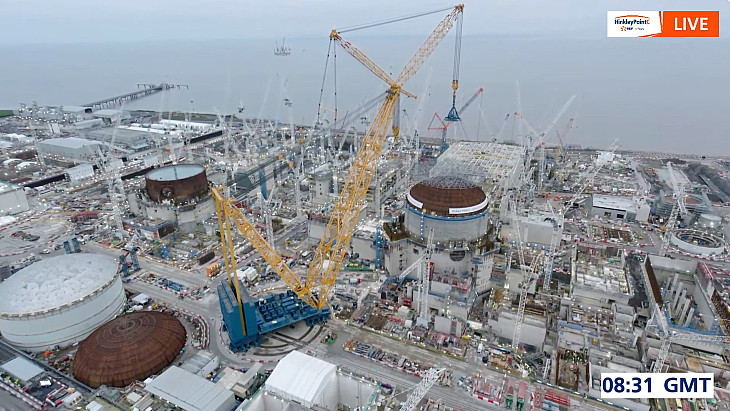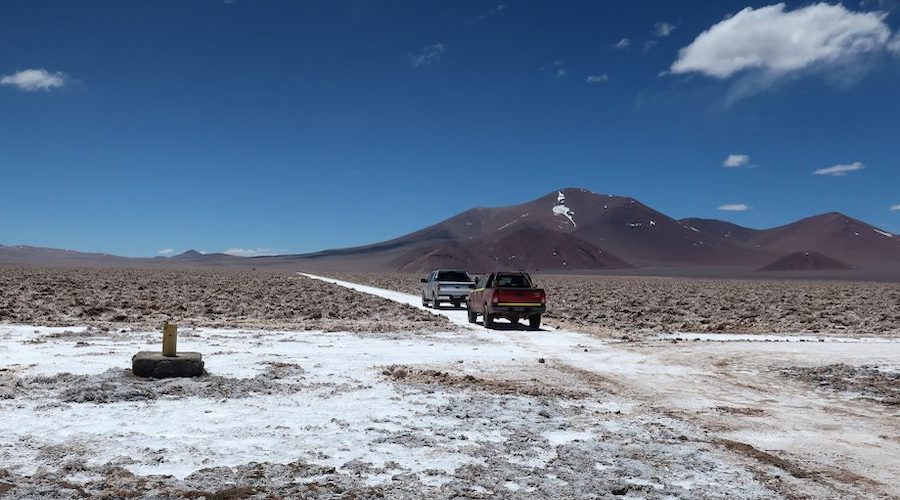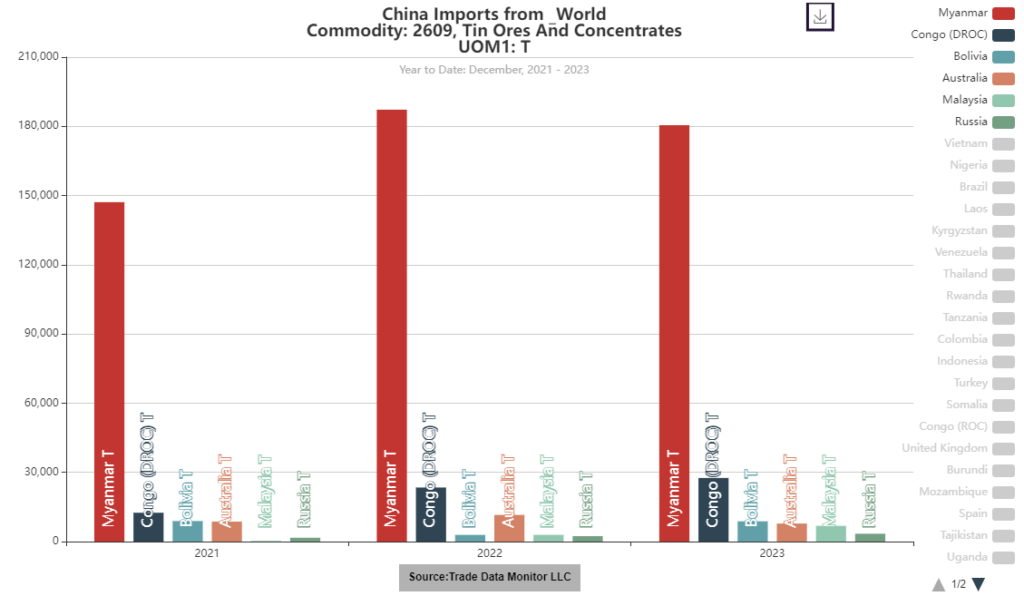New location expresses interest in hosting UK repository
26 January 2024
A Geological Disposal Facility (GDF) Working Group has been formed in South Holderness, East Riding of Yorkshire, UK, to begin engagement about whether the area might be suitable for hosting an underground radioactive waste disposal facility. Three other communities are already involved in the GDF siting process.
.jpg?ext=.jpg) Withernsea, a seaside resort town and civil parish in Holderness (Image: NWS)
Withernsea, a seaside resort town and civil parish in Holderness (Image: NWS)"Establishing a GDF Working Group is simply the starting point for a conversation with a local community and is in no way an indication that a GDF will be built in a particular area," Nuclear Waste Services (NWS) said. "One of the Working Group's tasks will be to engage people across the community to begin to understand the local area and any issues or questions the community might have."
NWS will be a member of the South Holderness GDF Working Group, along with the independent Chair, David Richards, an independent facilitator, Invest East Yorkshire, East Riding of Yorkshire Council and members of the community.
The Working Group's role is to open up engagement with the community, begin the work to understand the local area and identify an initial search area for further consideration. The group will also identify initial members for a GDF Community Partnership, which would take over from the Working Group and be a more enduring vehicle for community engagement and involvement in the siting process, including developing a community vision and distributing community investment funding.
The Working Group will focus its initial engagement in the southern parts of Holderness. The first in a series of community engagement events will start in February.
"The South Holderness GDF Working Group marks the beginning of finding out more about what a GDF is and gives our community an opportunity to share their thoughts about what it means for them," said David Richards, independent Chair of the Working Group. "We want to work with local communities to discuss the potential of a GDF and the establishment of a Community Partnership, which if formed would benefit local good causes through grants of up to GBP1 million (USD1.3 million) per year."
"We are delighted to see the formation of the South Holderness GDF Working Group," said NWS CEO Corhyn Parr. "South Holderness joins three other communities involved in the GDF siting process who are already learning more about this vital project and the benefits and opportunities it could bring, such as the creation of thousands of jobs and opportunities for investment in local infrastructure."
Between late-2021 and mid-2022, four localities formed Community Partnerships interested in hosting a GDF - Allerdale, South Copeland and Mid Copeland in Cumbria in northwest England, and Theddlethorpe in Lincolnshire, in eastern England. However, in September last year, Allerdale was removed from the siting process due to limited suitable geology.
A GDF comprises a network of highly-engineered underground vaults and tunnels built to permanently dispose of higher activity radioactive waste so that no harmful levels of radiation ever reach the surface environment. Countries such as Finland, Sweden, France, Canada and the USA are also pursuing this option.
The UK search for a site is based on the idea of community consent. Finding the right site to build the GDF could take 10-15 years.
Funding to support UK deployment of BWRX-300
25 January 2024
GE Hitachi Nuclear Energy (GEH) has been awarded a GBP33.6 million (USD42.7 million) grant to support it in developing its BWRX-300 small modular reactor in the UK. The design will now enter the Generic Design Assessment (GDA) process.
.jpg?ext=.jpg) A rendering of a BWRX-300 plant (Image: GE Hitachi)
A rendering of a BWRX-300 plant (Image: GE Hitachi)
GEH submitted its Future Nuclear Enabling Fund application with an experienced UK team including Jacobs, Laing O'Rourke and Cavendish Nuclear along with Synthos Green Energy, an investor and developer from Poland.
GEH said it is developing a UK supply chain which includes a memorandum of understanding with Sheffield Forgemasters for a potential supply agreement for UK-sourced steel forgings in support of the deployment of BWRX-300 small modular reactors (SMRs).
GEH's Future Nuclear Enabling Fund (FNEF) project includes a two-step GDA and Enterprise Readiness activities including an Advanced Manufacturing Plan and Operator Plan.
The Department for Energy Security & Net Zero (DESNZ) has now said the application "exceeded the quality thresholds across all four assessment criteria and successfully completed the department's due diligence and governance approvals processes".
In addition to awarding the grant, DESNZ has requested the Office for Nuclear Regulation (ONR), along with the Environment Agency and Natural Resources Wales, start a two-step GDA of the BWRX-300 reactor.
GDA is a process carried out by the ONR and the environmental regulators to assess the safety, security, and environmental protection aspects of a nuclear power plant design that is intended to be deployed in Great Britain. Successful completion of the GDA culminates in the issue of a Design Acceptance Confirmation from the ONR and a Statement of Design Acceptability from the Environment Agency. In May 2021, the GDA process was opened up to advanced nuclear technologies, including SMRs.
GEH will be supported in the GDA by Jacobs, which has supported applications for new nuclear power plant projects in the UK since 2007. In October, it was announced that GEH has reached the next stage of the Great British Nuclear SMR competition.
"We believe our BWRX-300 small modular reactor is an ideal solution for the UK's decarbonisation and energy security goals, and we appreciate the UK Government making this FNEF grant available to help demonstrate this," said GEH President and CEO Jay Wileman. "We have assembled a first-class team to deliver the BWRX-300 in the UK and this FNEF grant will help accelerate regulatory acceptance and its deployment readiness while we continue to develop a robust UK supply chain."
"The biggest expansion of nuclear power for 70 years is under way in the UK and small modular reactors are front and centre in this rapid revival," Minister for Nuclear Andrew Bowie said. "Today's GBP33.6 million in funding for GE Hitachi will help develop their design, putting us in an excellent position to become one of the first to deploy this game-changing tech."
The GBP120 million Future Nuclear Enabling Fund was launched by the UK government in May 2022 to support development of new nuclear energy projects, stimulate competition in the industry and unlock investment across the UK. The fund will help the government reach its ambitions for 24 GW of nuclear generating capacity by 2050.
In early December last year, Holtec International's UK subsidiary, Holtec Britain, was awarded a GBP30 million (USD37.7 million) Future Nuclear Enabling Fund grant for its SMR-300 design to complete Steps 1 and 2 of the GDA, as well as constructability and safety case assessments and completion of associated technical deliverables, including those of the safety, security and environmental cases.
Researched and written by World Nuclear News
EDF announces Hinkley Point C delay and rise in project cost
23 January 2024
The UK's Hinkley Point C nuclear power plant, which was expected to be completed in 2027 and cost up to GBP26 billion, is now unlikely to be operational before 2030, with the overall cost revised to between GBP31 to GBP34 billion (in 2015 prices), EDF has said.
 The dome's installation took place in December (Image: EDF live stream)
The dome's installation took place in December (Image: EDF live stream)
Construction of Hinkley Point C - composed of two EPR reactors of 1630 MWe each - began in December 2018, with unit 1 of the plant originally scheduled to start up by the end of 2025, before the revision to 2027 in May 2022. The news of the further schedule change comes just weeks after the landmark moment of the dome being installed on the first unit at the plant.
In a statement released on Tuesday evening, EDF said a review of the project had been finalised and the aim now was to bring unit 1 into service "around the end of the decade". It gave three scenarios, with the first being unit 1 operational in 2029, based on a target productivity for the electromechanical work. The second scenario - the "base case" - assumes some risks in the electromechanical work and the testing schedule, and 2030 operation. The third scenario is for a further 12 month delay to 2031.
The French-state owned nuclear giant said it now estimated the likely cost at between GBP31 billion and GBP34 billion, at 2015 prices, with a further GBP1 billion cost for the third scenario.
In a message to staff at the site, Stuart Crooks, managing director of Hinkley Point C, said that the COVID-19 pandemic had caused a 15 month delay to the project, adding: "Going first to restart the nuclear construction industry in Britain after a 20-year pause has been hard. Relearning nuclear skills, creating a new supply chain and training a workforce has been an immense task which others will benefit from for decades to come. Like other infrastructure projects we have found civil construction slower than we hoped and faced inflation, labour and material shortages on top of COVID and Brexit disruption.
"The good news is that much of that pioneering work to rebuild our industry is done. Once we learn how, we see performance improve by 20-30% when we repeat work on our identical unit two. Innovation is making a difference too. For example, new welding techniques mean we can now weld a metre on our steel pools in one hour instead of four. Building and repeating an identical design is the key to success - the evidence is clear."
He said that 70% of equipment had now been delivered for unit 1, and "many risks are behind us, like the unique British instrument and control system which has been designed and manufactured, with testing under way". He added: "We had to substantially adapt the EPR design to satisfy British regulations, requiring 7000 changes, adding 35% more steel and 25% more concrete. This adaptation and approval process is the same for other developers bringing new designs into Britain. Now the design of our UK plant is complete in detail meaning contractors have certainty over exactly what is needed to build the plant."
Crooks also said that "British consumers or taxpayers won't pay a penny, with the costs met entirely by shareholders".
Tom Greatrex, chief executive of the UK's Nuclear Industry Association, said: "The more nuclear stations we build the quicker and cheaper it will become, so instead of building one plant at a time with long gaps in between projects, a programmatic approach, as outlined in the government’s Nuclear Roadmap, is vital to ensure we build expertise, maintain workforce capability and increase efficiency. Hinkley Point C is the most significant green energy project ever in the UK and represents the revival of an industry after a generation of not building any new plants. It has revitalised the supply chain, creating thousands of skilled jobs in the process and will provide vital learnings for the rest of the industry."
The EDF announcement on Hinkley Point C's schedule came on the same day the UK government announced it was providing a further GBP1.3 billion to the Sizewell C project in eastern England, to allow construction work to continue pending a final investment decision on the plant which is due to be a replica of Hinkley Point C.
UK invests further GBP1.3bn to keep Sizewell C on schedule
23 January 2024
The GBP1.3 billion (USD1.65 billion) of government funding will be used for necessary infrastructure work such as roads and rail lines and allows construction work to continue pending a final investment decision on the proposed plant.
 How Sizewell C could look (Image: EDF, Sizewell C
How Sizewell C could look (Image: EDF, Sizewell C
The Department for Energy Security and Net Zero said that "committing further government support at this stage will help the project stay on schedule and keep down overall costs". It follows a Development Consent Order issued last week which gave approval for construction to begin and allowed GBP250 million funding for local community and environment initiatives.
The EDF-led plan is for Sizewell C to feature two EPRs producing 3.2 GW of electricity, enough to power the equivalent of around six million homes. It would be a "replica" of the Hinkley Point C plant, under construction in Somerset.
Julia Pyke and Nigel Cann, joint managing directors at Sizewell C, said: "This significant investment underlines the importance of Sizewell C for Britain and is a further sign of confidence in our team to deliver it. With the project now in construction, the funding means we can step up activity in Suffolk and deliver on our commitments to local communities ... it will bring another big boost to British nuclear skills and training, putting the industry in an even better position to deliver the other projects this country needs for its low-carbon future."
Nuclear Minister Andrew Bowie said: "This investment injection means we can steam ahead with work on Sizewell C ahead of the final investment decision targeted later this year. It’s a win for our energy security and sends a strong message to investors that Britain is serious about its low-carbon, homegrown nuclear-powered future."
EDF agreed in October 2016 with China General Nuclear (CGN) to develop the Sizewell C project to the point where a final investment decision could be made. EDF had an 80% stake and CGN a 20% stake. However, the so-called "golden era" of UK-China relations has ended in recent years with the UK government citing security concerns as it reviewed and blocked Chinese investments in UK infrastructure. In November 2022, the UK said it would invest GBP679 million and become a 50% partner with EDF in the Sizewell C nuclear project. A further GBP511 million of funding was made available to the project in summer 2023, with the government funding designed to get the project to the final investment decision.
EDF said in November 2022 that a final investment decision "remained subject to the achievement of certain key stages, in particular the ability to raise the necessary financing to carry out the project as well as the deconsolidation of the project from the Group's balance sheet", adding that it planned to "retain only a minority stake in the final investment decision - a maximum of 20%". At the time it said it aimed to make a final investment decision in 2023.
The UK government, which earlier this month unveiled its roadmap to quadrupling nuclear energy capacity by 2050, has been seeking prospective investors in the Sizewell C project, launching a pre-qualification for potential investors as the first stage of an equity raise process last September. It has also taken legislation through Parliament allowing a new way of funding new large infrastructure projects - a Regulated Asset Base (RAB) funding model, which can see consumers contributing towards the cost of new nuclear power plants during the construction phase. Under the previous Contracts for Difference system developers finance the construction of a nuclear project and only begin receiving revenue when the station starts generating electricity.
The investment was welcomed by the UK nuclear industry with Tom Greatrex, chief executive of the Nuclear Industry Association, saying: "This investment shows the UK is committed to ramping up nuclear capacity to cut gas, cut carbon and provide energy security. The station will generate enough clean power for 6 million homes from a quarter of a square mile of land and create thousands of skilled jobs right across the country ... [and] paves the way for other nuclear projects, both large and small, which will revitalise the industry in the UK."
Researched and written by World Nuclear News















